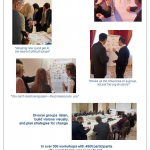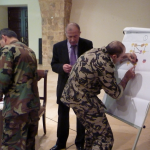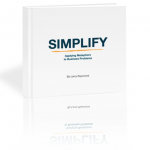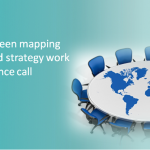
The April 7 issue of The Economist contained an interesting article on page 91, “Age and wisdom”. It mainly reports on the efforts of Dr. Igor Grossmann from the University of Waterloo Canada to compare accumulated wisdom between different countries and age groups.
The article defines what “psychologists agree” are five crucial aspects of wise reasoning:
1. Awareness that more than one perspective on a problem can exist
2. Recognition of the limits of personal knowledge
3. Appreciation of the fact that things may get worse before they get better
4. Willingness to seek opportunities to resolve conflict
5. Willingness to search for compromise
If those five points are accurate, gaining wisdom may be why participants feel so good at the end of Metaphor Mapping sessions. Map building, particularly in cross-function groups, addresses:
1. The differences in each person’s perspective on a situation. They become clear when made graphically visible in Village Maps.
2. Each person always has at least a nuance of difference from colleagues and sometimes great chasms
3. The incompleteness of any one individual’s knowledge is of a process or activity also is revealed when building Village Maps and leads to requests for colleagues to help
4. Optimists are warned that things can always be worse when they look at “volcanoes” that can change a Village’s environment or— when they look ahead for “crocodiles” on a River branch that could kill their career while they implement improvements
5. The map-building process encourages understanding the views of others, resolving conflicts and compromising when necessary
Some people have remarked that building their first metaphor map is an astonishing experience:

Some people have remarked that building their first metaphor map is an astonishing experience:

That shared view allows productive analysis of problems. Working together in this way deepens trust and makes it easier to appreciate colleagues’ views of the ideal future. One person builds, or “hitchhikes”, on the ideas of another. The resulting vision is in fact totally shared because each member of the team has contributed.
The eBook Metaphors for Alignment, gives background and examples of the tool’s usage.

As teams become virtual and global, coming together for process optimization and strategy setting becomes both more difficult and expensive. Metaphor Mapping’s web-based map-building tool, combined with conferencing tools such as Cisco’s Webex, Citrix’s Go To Meeting and Microsoft’s Lync that allow sharing PC screens enables clear communication across the distance and across cultures.
We are in early days of using this approach to organization effectiveness at a distance and will publish facilitator best practices in the near future.